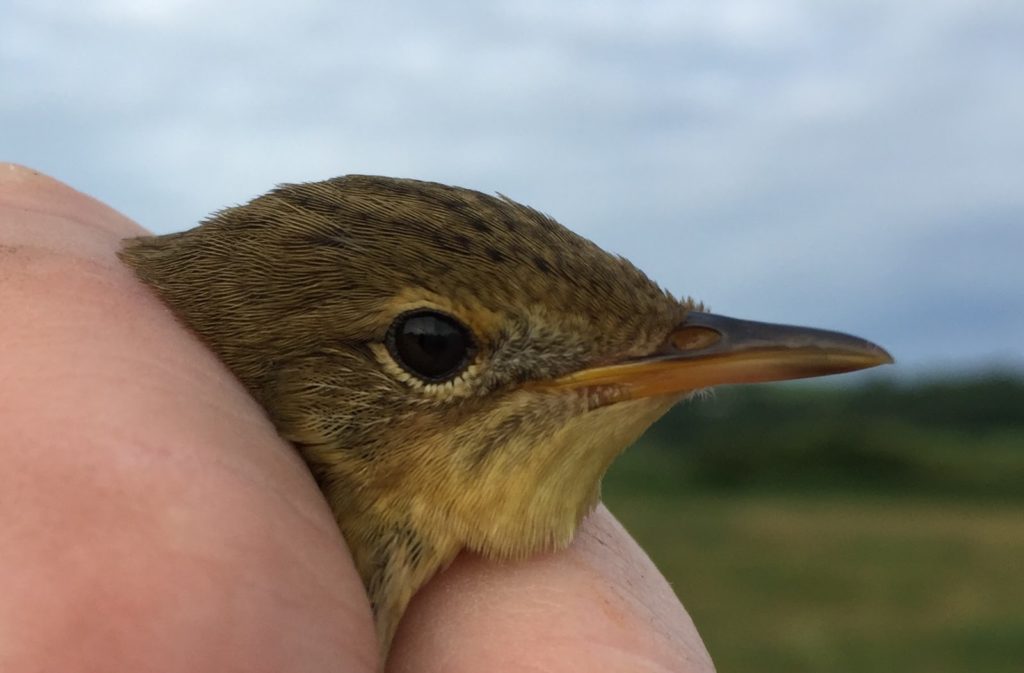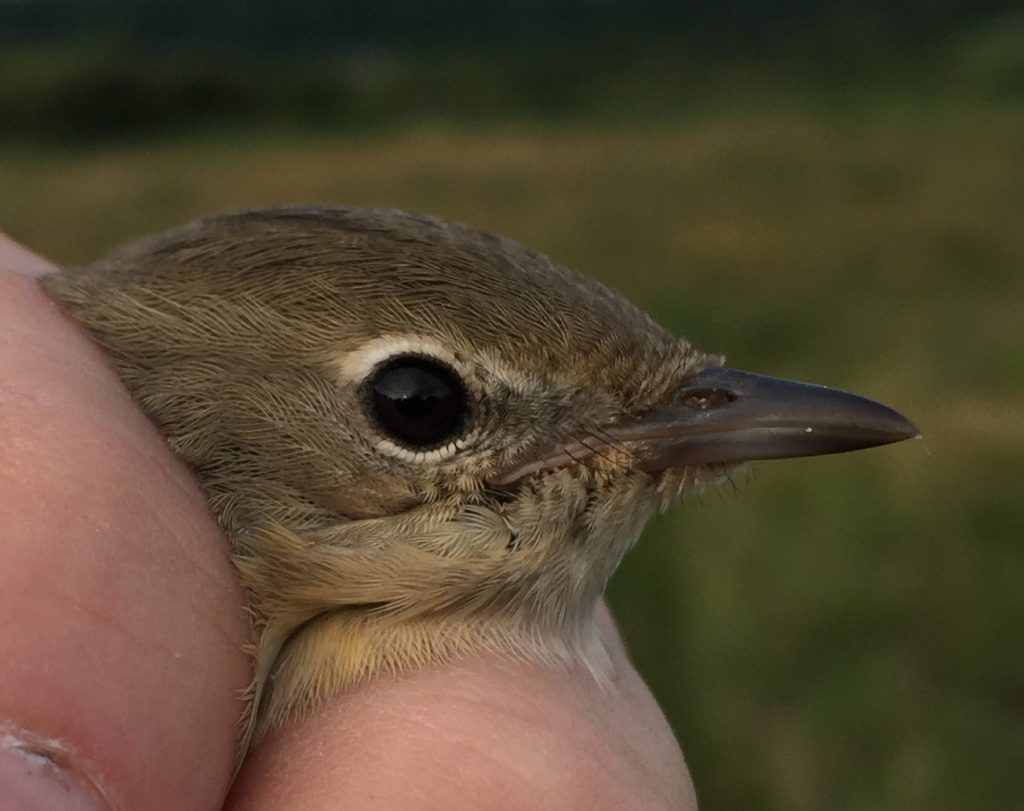The day started very disappointingly. A moderate north-westerly wind (the worst direction for the marsh) of around 13 mph, was about 6 mph higher than forecast, and caused the nets to billow. The wind gradually died off over the course of the morning, and by midday it was almost perfect ringing weather (calm and mainly overcast).
Given the sub-optimal weather during the critical first few hours of the morning, the catch of 171 birds, of which 103 were migratory warblers, was pretty good. It broke down as follows:
|
Species
|
Ringed
|
Recaptured
|
Total
|
|
Great
Spotted Woodpecker |
0
|
1
|
1
|
|
Swallow
|
9
|
0
|
9
|
|
Meadow
Pipit |
1
|
0
|
1
|
|
Wren
|
1
|
0
|
1
|
|
Dunnock
|
2
|
1
|
3
|
|
Blackbird
|
0
|
2
|
2
|
|
Grasshopper
Warbler |
4
|
0
|
4
|
|
Sedge
Warbler |
33
|
3
|
36
|
|
Reed
Warbler |
20
|
7
|
27
|
|
Whitethroat
|
2
|
0
|
2
|
|
Garden
Warbler |
2
|
0
|
2
|
|
Blackcap
|
4
|
2
|
6
|
|
Chiffchaff
|
2
|
0
|
2
|
|
Willow
Warbler |
23
|
1
|
24
|
|
Blue
Tit |
3
|
0
|
3
|
|
Great
Tit |
1
|
7
|
8
|
|
Chaffinch
|
3
|
2
|
5
|
|
Greenfinch
|
15
|
0
|
15
|
|
Goldfinch
|
10
|
6
|
16
|
|
Siskin
|
1
|
1
|
2
|
|
Reed
Bunting |
0
|
2
|
2
|
|
Total:
|
136
|
35
|
171
|
The features of the catch were the first two garden warblers of the autumn, an excellent day total of four grasshopper warblers, an influx of sedge warblers, a few more swallows, and good numbers of sedge, reed and willow warbler.
 |
| Grasshopper warbler |
Although it is likely that some of the warblers captured over recent weeks have not been local breeders, this was the first session during which we have trapped birds with significant fat and a species not likely to have bred locally. Single garden, grasshopper, willow and two sedge warblers were noted with fat scores of five (fat completely filling the tracheal pit and with a convex bulge), suggesting these birds were accumulating fat prior to migration. Garden warbler is a scarce breeding species and passage migrant in Gower, being more frequent in wooded valleys to the north and east of the Peninsula, and the two young birds captured are unlikely to have been of local provenance.
 |
| Garden warbler |
Also notable was the capture of a very recently fledged meadow pipit, a bird that appeared likely to have left a nest close by (based on plumage characteristics). This is the first confirmation of meadow pipit breeding successfully on the marsh since we began ringing here in 2013. However it appears there are a few territories present.
Overhead there appeared to be siskins moving around. At approximately this time last year we noted a second brood of fledged juvenile siskin, but there has been no evidence of this in 2016 to date.
Thanks to this morning’s team of Heather Coats, Wayne Morris, Emma Cole, Val Wilson, Hannah Meinertzhagen, Ben Rees, Lynn Watts, Sammy-Jo Pengelly and Terry Sullivan for company and assistance.
Further photos are below
Owain Gabb
30/07/2016
 |
| Grasshopper warbler |
 |
| Whitethroat (Emma Cole) |
 |
| The hoverfly Helophilus trivittatus (large tiger hoverfly) was trapped (and subsequently released) from one of the nets |